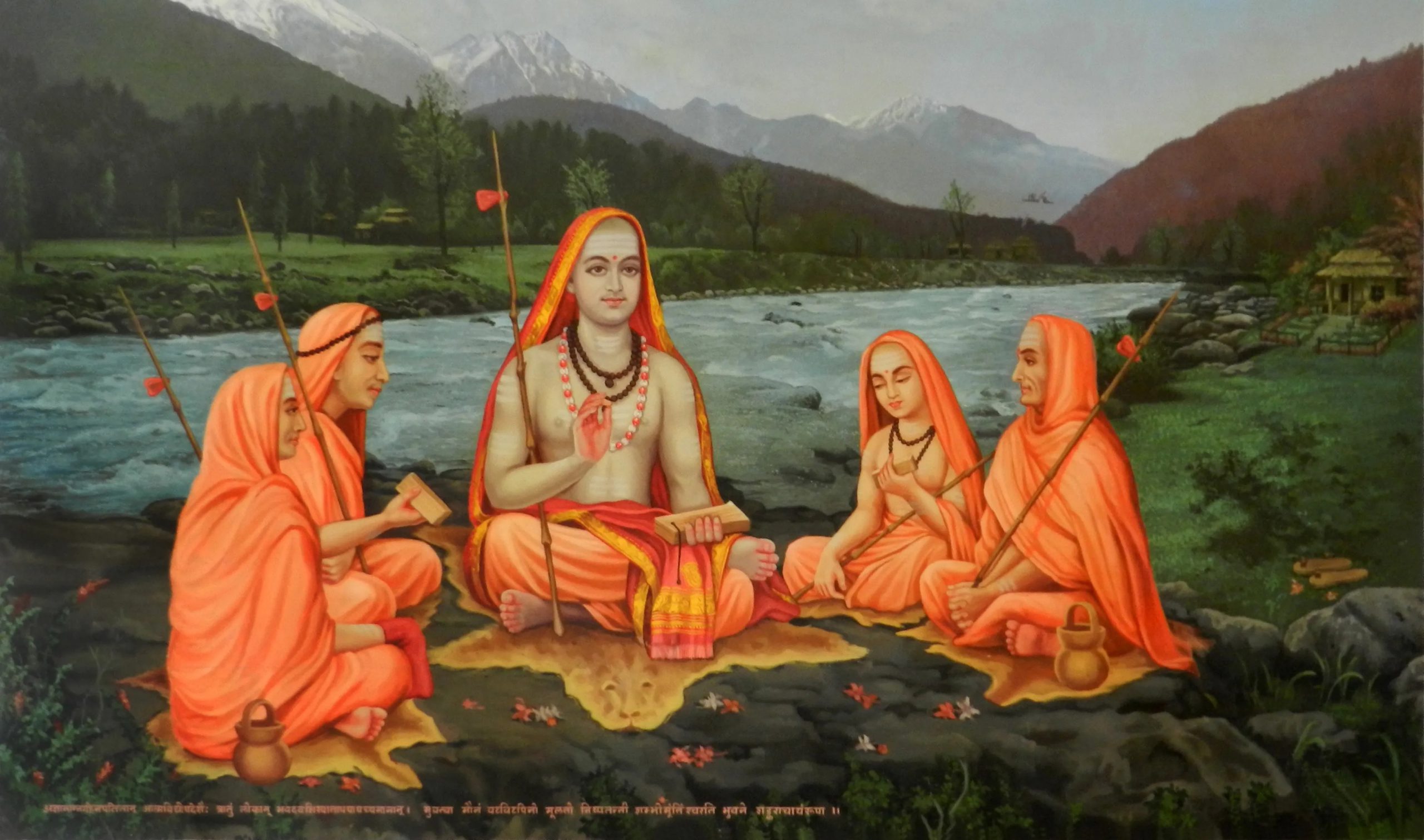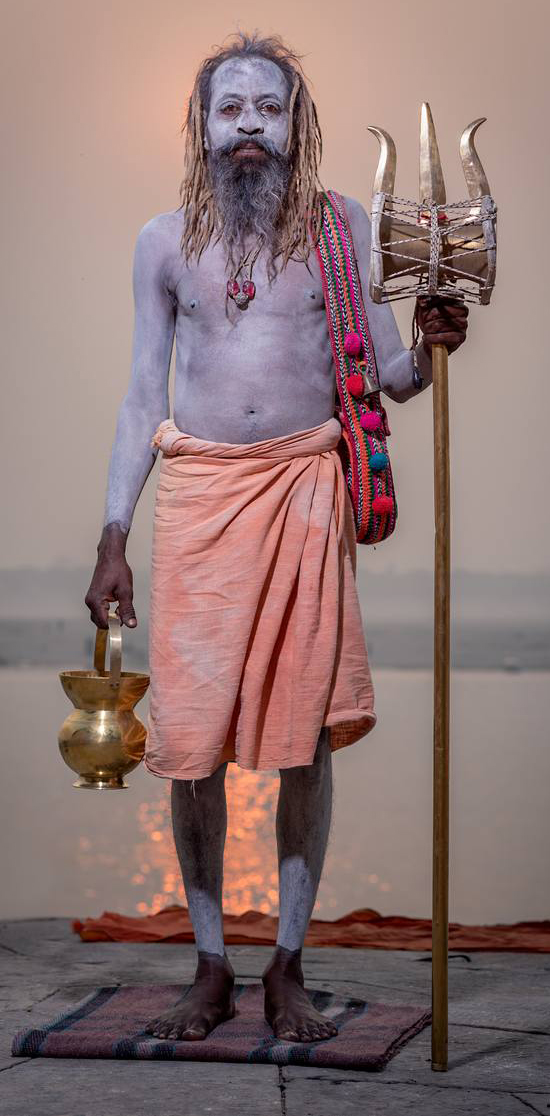Though Hindu scriptures give no specific guidelines on ways to achieve salvation through Gyan Marga they do provide us with some templates that can help us know how to proceed on the path to knowledge and wisdom to achieve salvation. These templates have been with us for ages and the truth-seekers have indeed gained a lot from them.
The Guru-Shishya tradition: This tradition is as old as Hinduism itself and its vestiges can still be found in the various campus of the Indian Institutes of Technology (IITs) and other elite institutions where teacher-taught ratio never exceeds 1:15 so that each student is closely watched, monitored and assessed by the professors as was the case in the olden times. The result, of course, is apparent from the heights the IIT students have attained all over the world, particularly the Silicon Valley.

In essence the tradition entails a lineage of passing knowledge from a succession of gurus to students through oral (now written as well) tradition and has been in practice among the Hindus, Buddhists, Jainis and Sikhs. The students (shishya) typically live with the guru in the ashram in the forest, away from home and imbibe their guru’s teaching and path. Knowledge is passed on from guru to shishya through spiritual, intellectual and emotional bond between them.
Stray wandering: Another important template is the stray wandering as was done by Siddhartha is German author Hermann Hesse’s novel Siddhartha (1922) depicting turmoil and turbulence of a young Brahmin boy, a mumuxu, who wanders all over is search of Moksha or salvation.

In this template, one wanders hither and thither in search of peace and salvation, picking up gurus and abandoning them at his sweet will, often taking lessons from mother Nature, as it were, and ultimately reaching one???s own conclusions. I have had a chance meeting with one such yogi, an Aghor Panth follower way back in 2002 at a cremation ground in Lucknow. The man had been a devout Marxist-Leninist, but left the party and the city, Calcutta, in disgust in early 1990s, wandered all over north India and was resting in a Shiva temple in Lucknow???s cremation ground where I met him by chance. The man had good command over English and Bengali languages with an impressive diction. His presence in the temple, puffing off marijuana (Cannabis indica) now and then and immaculate English simply bowled me over.
As “a rolling stone gathers no moss” so do such yogis! In the process some find salvation, some just keep their search on and on endlessly.
Grahasth Ashram template: Contrary to the Stray Wandering template (Sanyas), the sages have provided us with a sound, well-founded Grahastha Ashram template which is almost a reversal of the Stray Wandering template. This template is meant for house-holders (grahastha) who want to seek salvation by comfortably living at home, by choice or compulsion. There are innumerable examples of such salvation-seekers who are said to have attained salvation. King Janak is one of them.
Manusmriti, the sacred book of the Hindus which codifies the dos and don’ts for the devout Hindus specifically suggests self-study (swa-adhyaya) for the householders, the Grahasth. Unlike the yogis and sanyasis who prefer the life of stray wandering, the householders are advised to invite wandering sanyasis at home, play host to them, serve them well and take lessons from them during their stay. Indeed, some may be lousy but some may turn out to be a real gem – it depends on your luck and experience.
King Janak of Videha kingdom, according to epic Ramayana, had a penchant for wisdom and knowledge and he often invited yogis and sanyasis to his palatial residence to know and discuss their experiences in order to enlighten himself. One day he met an extraordinary person called (अष्टावक्र) Ashtavakra who had “eight physical deformities” that he was born with. The fable goes that the very first sight of Ashtavakra triggered an obnoxious smile on Janak’s face to which Ashtavakra retorted: My Lord if you see a distorted and a crooked temple somewhere do you conclude that the sky and heavens over it is also crooked? A temple is an assortment of bricks and mortar but the sky and the heavens are without parts, one, uniform and infinite. Please don’t confuse one with the other. Likewise this distorted body is different from the soul and consciousness which is pure, immutable, indestructible and infinite. Try to see the infinite and shun the skin-deep sensibilities.
Having heard Ashtavakra’s reply Janaka promptly bowed before him with humility, begged for mercy and took him to his residence, says the fable. The dialogues between Ashtavakra and Janaka was later codified and came to be known as Ashtavakra Gita. It is a treatise on Brahman and Atman and it is indeed a pleasure to read it as it explains various facets of Adi Shankar’s philosophy of Advaita or Monoism.
Those interested in reading the English translation of Ashtavakra Gita can visit this site.
Nachiketa template: I have borrowed this name and the template from an ancient Upanishad called Kathopanishad in which an inquisitive 12-year-old innocent kid Nachiketa poses some probing questions to Death incarnate, named Yama.
Taken aback, a reluctant Yama tries to duck the question, offering various objects of leisure and pleasure, but Nachiketa’s dogged determination forces Yama to yield.
Two components form the essence of this template: (1) innocent, benign questions and (2) posed to the most authentic and competent person. The answers come direct and authoritatively. Arjuna’s compelling questions to Krishna in the battlefield, described in Bagwadagita were innocent like a child and hence were answered by Krishna in all possible profundity.
Unlike Grahasth Ashram template in which a mumuxu or the truth-seeker, finds few grains in a lot of chaff, in the Nachiketa template the words/sermons coming from the giver are deemed a gospel truth because they come from authoritative persons — something like divine revelation to Moses on Mount Sinai ((Exodus 20; Deuteronomy 5).
The Shastrartha template : The word Shastrartha (शास्त्रार्थ) is composed of two Sanskrit words: Shastra (शास्त्र) which means scriptures and Artha (अर्थ) which means the essence, or the meaning. The word Shastrartha therefore means “identifying the essence or the true meaning of the scriptures”. Shastrartha was quite prevalent in ancient times and its vestiges can still be found in ancient cities like Varanasi, Ujjain, Prayag, Nasik, Rajamundary, Rameshwaram etc. where saints and sanyasis gather during the Kumbha mela or other occasion and discuss religion. For westerners who are alien to Hindu way of life, the word polemics may be the closest ally of Shastrartha.
Arguments, debates and polemics were quite common in the ancient time and often very many learned people gathered on such occasion to listen to the Shastrartha.
The most talked about Shastrartha is said to have happened between Adi Shankar and Mandan Mishra in the 8th century AD in which Adi Shankar finally prevailed upon Mandan Mishra following a 21-day-long Shastrartha. The issue was the validity of Vedic Karma. While Mandan Mishra defended the Vedic Karma, Adi Shankar defended the primacy of Advaitwada (monoism) over Vedic Karma. In the end Adi Shankar prevailed and Mandan Mishra became a disciple of Adi Shankar.